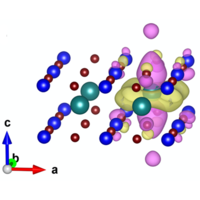Abstract
The recent discovery of superconductivity in oxygen-reduced monovalent nickelates has raised a new platform for the study of unconventional superconductivity, with similarities to and differences from the cuprate high-temperature superconductors. In this paper, we investigate the family of infinite-layer nickelates with rare-earth spanning across the lanthanide series, introducing a new and nontrivial “knob” with which to tune nickelate superconductivity. When traversing from La to Lu, the out-of-plane lattice constant decreases dramatically with an accompanying increase of Ni bandwidth; however, surprisingly, the role of oxygen charge transfer diminishes. In contrast, the magnetic exchange grows across the lanthanides, which may be favorable to superconductivity. Moreover, compensation effects from the itinerant electrons present a closer analogy to Kondo lattices, indicating a stronger interplay between charge transfer, bandwidth renormalization, compensation, and magnetic exchange. We also obtain the microscopic Hamiltonian using the Wannier downfolding technique, which will provide the starting point for further many-body theoretical studies.
3 More- Received 21 March 2020
- Revised 10 November 2020
- Accepted 24 December 2020
DOI:https://doi.org/10.1103/PhysRevX.11.011050
Published by the American Physical Society under the terms of the Creative Commons Attribution 4.0 International license. Further distribution of this work must maintain attribution to the author(s) and the published article’s title, journal citation, and DOI.
Published by the American Physical Society
Physics Subject Headings (PhySH)
Popular Summary
Low-temperature superconductors, discovered in 1911, sparked the imaginations of physicists and engineers; however, it took over 40 years to explain how they work. When high-temperature superconductivity was discovered in 1986, many pipe-dream applications became possible because cheap liquid nitrogen could be used instead of liquid helium. However, understanding the physics that controls these materials has remained elusive, since the theory that governs low-temperature superconductors cannot explain the phenomena at higher temperatures. Here, we take a step toward improving that understanding by revealing the complex electric and magnetic interactions at play in one high-temperature superconductor.
Many material classes of unconventional superconductors have been studied to probe the underlying theory, one of the most successful of which are the cuprates: copper oxide ceramics. It has long been theorized that because of nickel’s proximity to copper on the periodic table, nickel oxides also may be a class of materials that provides a novel avenue to study unconventional superconductivity. Last year, the first experimental evidence of superconducting nickelate was demonstrated in strontium-doped .
We use atom-based calculations to examine this class of materials by substituting the rare-earth element in the nickelate parent compound with elements spanning the lanthanide series. We discover a complex interplay between charge transfer, bandwidth renormalization, compensation, and magnetic exchange, which all have unique implications for nickelate superconductivity. In addition, we provide a new mathematical description of the system’s energy state as a starting point for further studies.
Substituting the rare-earth element in the parent compound provides a nontrivial “knob” for tuning nickelate superconductivity, which we hope will guide future calculations and experiments.



